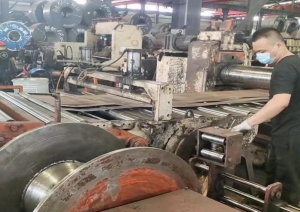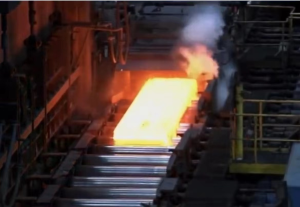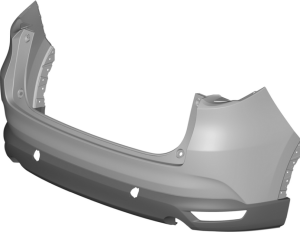Preguntas frecuentes sobre acero SPHC
¿Qué material es SPHC?
SPHC: la primera S es la abreviatura de Steel, P es la abreviatura de Plate, SPHC es la abreviatura de HeatWrite, la abreviatura de C Commercial Commercial, generalmente significa placa de acero laminado en caliente y tira de acero en su conjunto. SPHC es un fleje de acero laminado en caliente y una placa de acero para uso general, y es un grado en el estándar japonés JIS G 3131.
¿Cuál es la composición química del acero SPHC?
El acero SPHC está hecho de placa laminada en caliente que ha sido decapada para eliminar las incrustaciones. Luego, la hoja laminada en caliente pasa por un proceso de reducción en frío para reducir el espesor del material. Luego, el material se recoce para aumentar la ductilidad del acero. Hay diferentes grados de acero SPHC que van desde JIS G 3131-1996 hasta JIS G 3131-2000.
Entre sus elementos químicos se encuentran los siguientes:
Carbono (C): menos de 0.15%
Silicio (Si): menos de 0.05%
Manganeso (Mn): menos de 0.60%
Fósforo (P): menos de 0.035%
Azufre (S): menos de 0.035%
Aluminio (Al): superior a 0,010%
Estos son los principales componentes químicos contenidos en el acero SPHC. El contenido de elementos de SPHC fabricado por diferentes fabricantes será ligeramente diferente, pero todos están dentro de este rango.
¿Cuáles son las propiedades mecánicas del acero SPHC?
Los aceros SPHC se utilizan normalmente en aplicaciones que requieren una buena formabilidad, como piezas de automóviles, electrodomésticos y muebles. Las propiedades mecánicas de los aceros SPHC son generalmente inferiores a las de los aceros más especializados, pero son adecuados para muchas aplicaciones.
Resistencia a la tracción: 270-430 MPa
Límite elástico: 185-265 MPa
Alargamiento: 26-34% (grosor inferior a 3 mm)
Módulo a granel: 160-200 GPa
Módulo de corte: 80-110 GPa

Los trabajadores procesan la placa de acero Baosteel SPHC en tiras
¿Cuáles son las características del acero SPHC?
Los aceros SPHC tienen buenas propiedades mecánicas, incluida una alta resistencia a la tracción, buena ductilidad y excelente soldabilidad. También tienen excelentes propiedades físicas, que incluyen alta dureza, buena tenacidad y buena resistencia a la corrosión.
¿Cómo se produce SPHC?
El proceso de producción de fleje de acero laminado en caliente SPHC es el siguiente:
Metal caliente de alto horno——desulfuración——convertidor de soplado combinado superior e inferior de 120 t——horno de refinación LF——máquina de colada continua ASP——horno de calentamiento——desfosforación——laminado en bruto—laminado de acabado—enderezamiento—bobinado—Biblioteca de productos terminados.

El fleje laminado en caliente SPHC ingresa al proceso de desbaste
Cuando se utiliza laminación en caliente para fundir grados de acero SPHC, el contenido de azufre debe controlarse en el pretratamiento del hierro fundido para cumplir con los requisitos de los grados de acero, para cumplir con los requisitos del punto final del convertidor y asegurar que el contenido de azufre del producto de acero fundido está calificado. El objetivo del contenido de azufre del hierro fundido en el sistema de desulfuración está determinado por el retorno de azufre al final del convertidor. Bajo el proceso original, el retorno de azufre del convertidor es 0.016% (llamado 16 azufre). Para cumplir con los requisitos de composición, el contenido de azufre objetivo de desulfuración se ajustó del original 0.015% a 0.010%. Con el fin de mejorar la tasa de utilización del polvo de magnesio, la tasa de inyección de polvo de magnesio se ajustó desde los 12 kg/min originales a menos de 10 kg/min para aumentar el polvo de magnesio en el Aumentar el tiempo de residencia del hierro fundido, aumentar la cantidad disuelta , y mejorar el efecto de desulfuración del polvo de magnesio. Al eliminar la escoria, se requiere exponer al menos 2/3 del nivel de hierro fundido para minimizar el retorno de azufre del convertidor causado por la eliminación de la escoria sucia. Después de ajustar el proceso, el retorno de azufre del convertidor se controla a 0.008% (llamado 8 azufre). El consumo también se ha reducido, proporcionando hierro fundido calificado y de alta calidad para la operación del convertidor y reduciendo la carga de desulfuración del convertidor.
¿Cuál es el proceso de calentamiento de SPHC?
El tiempo de calentamiento de SPHC se basa en 7-9 min/cm, el tiempo de calentamiento de la palanquilla de 230 mm es de 3-4,5 horas; el tiempo de calentamiento de la palanquilla de 250 mm es de 3,5 a 5 horas. De acuerdo con los requisitos de configuración del espesor de la placa de acero acabado, el ancho y la temperatura de laminación y la velocidad del ritmo de golpeteo, la temperatura de cada sección se ajustará adecuadamente dentro del rango anterior. La tabla de control de temperatura de calefacción es la siguiente:
| marca | La temperatura de calentamiento/℃ | Estabilidad de remojo
/℃ |
La temperatura del tocho
/℃ |
|
| SPHC | El alcance de | 1220-1300 | 1240-1300 | 1230-1290 |
| El objetivo | 1250 |
*Las temperaturas anteriores son valores de referencia. Dado que el espesor, el ancho y la temperatura de laminación de la placa de acero terminada son diferentes, la temperatura de cada sección se puede ajustar de manera adecuada dentro del rango de la tabla anterior.
¿Cómo se controla la temperatura de SPHC?
SHPC controlará estrictamente la temperatura de tres puntos clave durante el proceso de laminación, a saber, la temperatura de salida de laminación aproximada, la temperatura de terminación de laminación y la temperatura de bobinado. Los parámetros de temperatura se muestran en la siguiente tabla:
| marca | espesor | RT2℃ | refinamiento
℃ |
bobinado℃ |
| SPHC | ≦ 2,05 mm | 1080±20 | 870±20 | 710±20 |
| >2,5 mm | 1060±20 | 880±20 | 710±20 |
* Optimizaremos y ajustaremos el contenido de C de destino según sus necesidades.
¿Para qué se utilizan los SPHC?
SPHC tiene una amplia gama de usos. Por un lado, puede utilizarse como material base de chapas de acero laminadas en frío. Después del decapado para eliminar la escala de hierro en la superficie, se puede laminar en frío y convertir en productos laminados en frío para el suministro; por otro lado, sphc laminado en caliente y decapado Hay una gran demanda de tableros en la industria automotriz, industria de maquinaria, industria ligera y electrodomésticos
- Industria del automóvil:
Sistema de chasis de automóvil
panel interior de la cabina
Tablero de transporte
Algunas piezas pequeñas internas estampadas, etc.

Placa de acero SPHC convertida en acero para seguros de automóviles
- Industria de maquinaria:
maquinaria textil
mía
mecánico
ventilador
- Aparatos industriales ligeros
carcasa del compresor
soporte
Revestimiento del calentador, etc.
- Partes de la bicicleta
Cabina electrica
barandilla de carretera
Valla escalera de hierro, etc.
¿Cuál es la diferencia entre SPHC y Q235?
La diferencia entre los dos es principalmente en la intensidad. El estado de fábrica de SPHC es un producto laminado en caliente normalizado y su contenido de carbono es menor que el de Q235, por lo que el tamaño de grano de SPHC es más pequeño que el de Q235, por lo que la tenacidad y el rendimiento de soldadura del acero SPHC son mejor, pero la resistencia a la tracción de SPHC es de aproximadamente 300 MPa en términos de resistencia. , La resistencia a la tracción de Q235 es de alrededor de 400 MPa.

